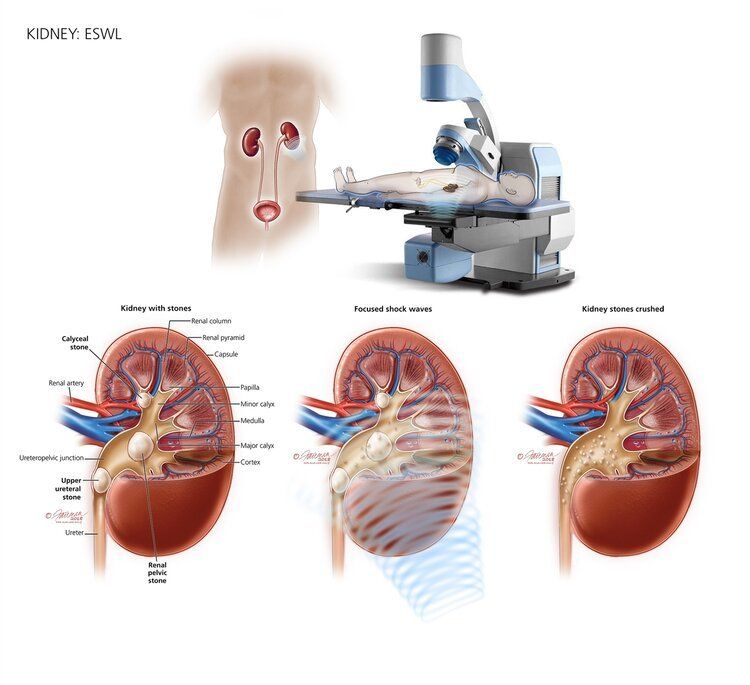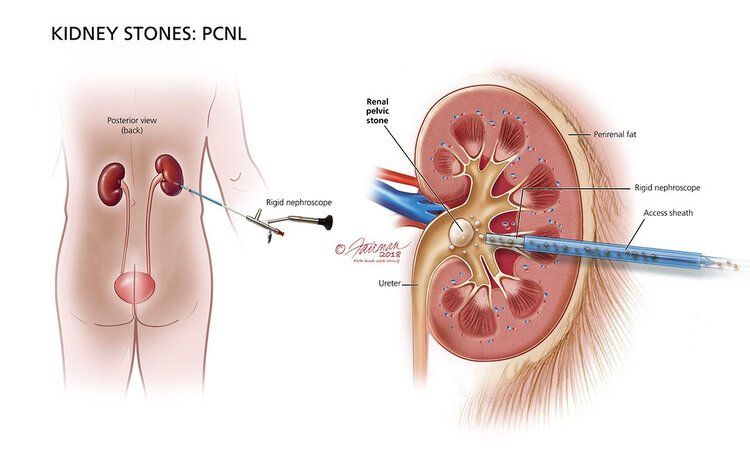Lithotripsy for Kidney Stones
TREATMENT FOR KIDNEY STONES
Sometimes stones are able to pass with medication and time. However the indications to treat stones surgically include:
- The stone fails to pass.
- The pain is too great to wait for the stone to pass.
- The stone is affecting kidney function
- If stones are detected before they pass, they can be treated and removed before they pass
Fortunately, treatments for kidney stones are minimally invasive and recovery usually only takes a few days.

Shock wave lithotripsy (SWL)
Shock Wave Lithotripsy (SWL) is used to treat stones in the kidney and ureter. Shock waves are focused on the stone using X-rays or ultrasound to pinpoint the stone. Repeated firing of shock waves on the stone usually causes the stone to break into small pieces. These smaller pieces of stones pass out in the urine over a few weeks.
Because of possible discomfort caused by the shock waves and the need to control breathing during the procedure, some form of anesthesia is often needed. SWL does not work well on hard stones, such as cystine, some types of calcium oxalate and calcium phosphate stones, or very large stones.
With SWL, you are able to go home the same day as the procedure. You are typically able to resume normal activities in two to three days.
Ureteroscopy (URS)
Ureteroscopy (URS) is used to treat stones in the kidney and ureter. URS involves passing a very small telescope, called an ureteroscope, into the bladder, up the ureter and into the kidney. Rigid telescopes are used for stones in the lower part of the ureter near the bladder. Flexible telescopes are used to treat stones in the upper ureter and kidney.


Percutaneous nephrolithotomy (PCNL)
Percutaneous Lithotripsy (PCNL) is the best treatment for large stones in the kidney. General anesthesia is needed to do a PCNL. PCNL involves making a half-inch incision (cut) in the back or side, just large enough to allow a rigid telescope (nephroscope) to be passed into the hollow center part of the kidney where the stone is located.

